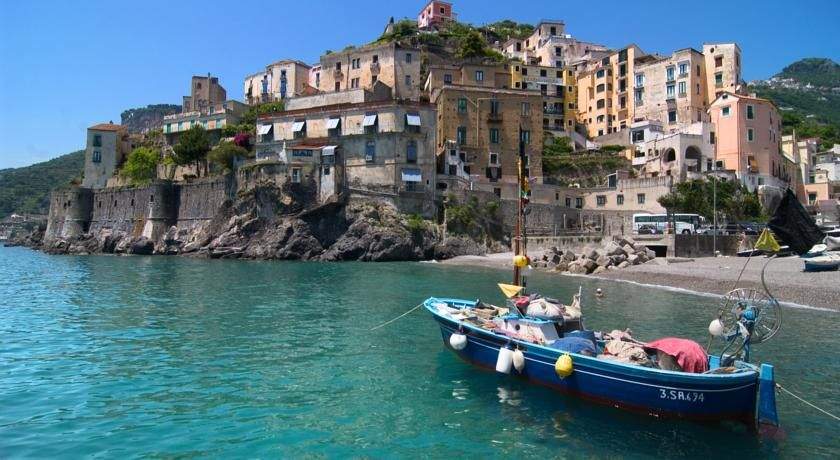A tunnel will connect two of the most beautiful towns on the Amalfi Coast, Maiori and Minori: the process for the construction of the infrastructure, which aims to make vehicular traffic smoother in this stretch of the Coast, one of the country’s most enchanting scenic areas, has begun. The Campania Regional Council has given the green light to the revision of the Territorial Urban Plan, which will be the first step in making the project a reality.
The tunnel will rise between the two coastal villages and will serve to more easily cross the promontory that divides them. At the moment, the only connection is State Highway 163, which goes around the headland-a road that offers wonderful views but is always very busy, and consequently the tunnel will create a variant of the state highway and allow traffic to flow more smoothly. The project will cost 18 million euros.
The process, of course, is not the most obvious: it will need the evaluation of the Transport and Urban Planning Commission, there will be another passage in the Regional Council, and then again it will be necessary to wait for the opinions of the Superintendence and the Services Conference. But, as is to be expected, the work is causing much discussion. On the regional front, two minority councillors, Antonio Cioffi and Alberto Parascandolo, have registered a motion for the next town council, in which they call for an advisory referendum, which can directly involve citizens through democratic participation, on a decision that will forever change the landscape of this stretch of the Amalfi Coast.
On the national front, the work is contested by even opposing sides of Parliament. On Friday last, Forza Italia MP Luigi Casciello submitted a parliamentary question to the ministers of the environment, infrastructure and cultural heritage to ask “what initiatives and interventions the ministers being questioned, within the scope of their competencies, intend to promote to verify and, if necessary, suspend the process for the construction of the variant between Maiori and Minori to State Road 163, which risks irreversibly altering and damaging the two towns and the morphology of the entire Amalfi Coast, which cannot be absolutely modified in its peculiar structure, but must be respected as a unicum.”
Casciello cites the 1987 Urban Territorial Plan of the Campania region, in which “no mention was made of the need to run a tunnel between the two towns.” “upstream of it all,” Casciello says, “there is funding that originates from the 2014/2020 European Funds for Development and Cohesion, which were intended to solve the traffic problem through sustainable mobility interventions in the Amalfi and Sorrento coasts and to provide productive economic development and employment, respecting the sustainable environmental sustainability and safety of the territory,” and “the sad message that is perceived is that they want to equip the coastal municipalities to be crossed by a greater vehicular flow, without paying any attention to the environment and hydrogeological disruption.” Also according to Casciello, the tunnel will divert resources that could be allocated to other projects such as the cable car to Ravello, the variant of state highway 163 in the municipality of Positano, the bypass of the historic center of Scala, and others. “The tunnel and the concrete casting,” says Casciello, “would compromise this very delicate microcosm irreversibly, causing damage from a geological point of view in an area in which there have been so many episodes of landslides over time, just think that cyclically the Amalfi Coast remains isolated an average of 38 days a year due to landslides.”
Also of the same opinion is Congresswoman Anna Bilotti of the 5 Star Movement, who in a joint note with regional councilor Michele Cammarano (also a Pentastellist), writes that “justifying a tunnel on the basis of a substantial increase in vehicular traffic when quota ordinances are the order of the day is insane, to say the least.” The 2019 UNESCO Intergovernmental Committee on World Heritage, the two add, “has provided clear guidance on the potential damage caused by events that could undermine the recognized value of these sites. Rather than thinking about spending 18 million euros for 400 meters of tunnel, we would rather approve a management plan for the Amalfi Coast Unesco site, as required by Law 77 of 2006.”
In the photo: view of Minori
 |
| Tunnel in the Amalfi Coast: the project makes citizens and politicians debate |
Warning: the translation into English of the original Italian article was created using automatic tools. We undertake to review all articles, but we do not guarantee the total absence of inaccuracies in the translation due to the program. You can find the original by clicking on the ITA button. If you find any mistake,please contact us.